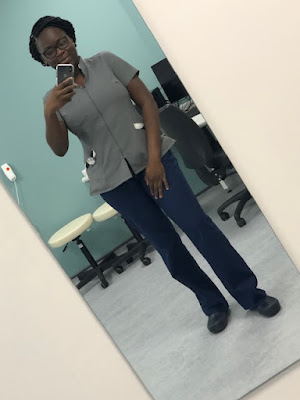Radiotherapy Simplified: Pre-treatment and Planning.
Hey Everyone,
Welcome back to my blog, firstly I'd like to say thank you for always taking the time to read my blog, I appreciate it and words cannot express how grateful I am.
So let's continue with the radiotherapy simplified series shall we?
Today let us talk about Computed Tomography (CT), so grab a cuppa and enjoy the post.
Pre-treatment chat
- The patient will receive a list of appointment times which includes their pre-treatment chat, CT scan, first day chat and treatment times.
- An information session is held before the scan to reconfirm the patient’s consent for the scan and the treatment.
- The patient will then be directed to change into a hospital gown and lay down on the CT scanner couch/bed.
The Scan
The planning scan is done to produce an image of the patient so the treatment can be planned, this scan is very different to a normal CT scan because the position the patient will be in throughout the duration of their treatment is the same position they will be in for the scan. The scan duration can vary depending on the treatment so it is very important to remain stable during the CT scan. During this time, patients are able to inform the radiographer if equipments are to be added or moved if they experience any discomfort.”
Once the treatment position is set, the radiographers will proceed to ensure the patient is laying straight by feeling their bones and moving them if necessary. Don’t worry if the radiographers speak amongst themselves during the scan, it is to ensure that all equipments used is noted to be reproduced for the treatment.
The CT machine itself is like a doughnut shape, during the setup and scan, the patient will be moved in and out of the scanner to check for any collision, the radiographers will draw some pen-marks on the patient’s skin and place radiopaque markers on the pen-mark – this simply means the radiopaque markers can show up in scan and will aid the treatment planner in the planning process.
The most important thing to remember is to lie still (I always advise my patients to lay down and think of a happy place where they would rather be). During the scan, patients should only hear noises from the machine and nothing else to see or feel.
Depending on the department, once the scan is complete, the next process will be the tattooing processing. A mark is made by adding a small amount of ink on the skin, the needle is used to lift the skin up ever so slightly in order to let the small amount of ink settle. The tattoos will be used during the treatment process to set the patient in the right position each time they come for treatment – I’ll explain this further in future posts.
Other departments might not give permanent marks due to having a software program known as VisionRT, the software is used to track the patient’s skin surface using its 3D camera apart from the surface guided aspect, the software is also very useful for patients with left breast cancer (I’ll explain further). A lot of patients would benefit from this software as life after treatment means they would not have to deal with the trauma of seeing their permanent marks on their skin as a reminder of this grievous ordeal they went through hence why radiographers ensure the tattoos are small in size.
Once the tattoos are done, the patient is free to get changed and go home, their next appointment should be their first day of treatment.
Treatment planning and Verification
The next stage would be the planning stage:
· The patient’s scan is imported into a planning system
· The treatment is planned by a team of healthcare professionals such as radiographers, dosimetrists and physicists.
· The plan is reviewed by the clinical oncologist which means suggestions can be made to improve the plan or can be approved if the consultant is happy. This process can take over a week or less depending on the workload within the department hence why some patients cannot start treatment the day after their scan.
Upon completing the planning process, further checks might be done to ensure the machine can deliver the treatment as planned.
Prior to day one, treatment checks are completed to verify the prescribed dose and schedule treatment sessions, the treatment can commence after this.
Thank you for reading, see you in my next post!
Follow me on all social media:
IG and Twitter: @missoladele
LinkedIn: Mary Oladele
With Love,
Mary Oladele
xxx



Comments
Post a Comment